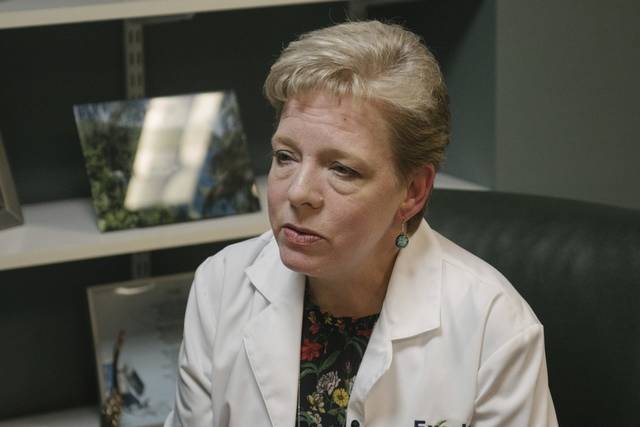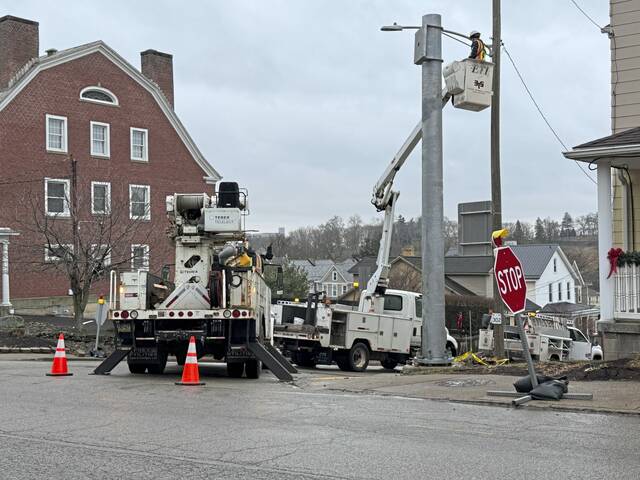As covid-19 cases continue to increase in Western Pennsylvania, the Tribune-Review spoke with Excela Health Chief Medical Officer Dr. Carol Fox about some of the questions we have about the new coronavirus.
The text of this interview has been edited for length and clarity.
Question: When should patients call for a covid-19 test?
Answer: What I would say is this: There is testing available. It’s not as widely available as we would like, so we have to be judicious in the use of those tests. But if a patient has a concern, they should call their primary care physician. Their primary care physician is going to ask them a series of questions, part of them are going to be related to their exposure history, whether they’ve travelled anywhere, whether it’s domestic or internationally, whether they have been exposed to anyone who either is a known covid-19 patient or who is under investigation for being a covid-19 patient.
They’re also going to look at some other historical factors such as: Do you live in a nursing home? Those individuals are at higher risk. Are you a health care worker that may have been exposed? Those individuals are at higher risk. So, your physician will take all those questions in mind and typically they will collaborate with the state Department of Health and then make a determination as to whether or not testing is indicated for you.
Q: Should we cancel routine doctor appointments?
A: That’s a really good question. When you look at the guidance we’ve received from the (Centers for Disease Control and Prevention) and the Department of Health, there really isn’t a clearcut answer or very specific guidance on that. That being said, at this point within Excela, our primary care and other physicians have made the decision, at least in the short term, to limit routine visits and really focus on visits the patients need to have in order to evaluate an acute type of a problem.
Our goal is really to protect our population of older adults and individuals with comorbid conditions. Of course, we don’t know at this point how long before an individual becomes visibly ill that they may share the virus and expose other people.
Q: How long can the coronavirus live on a surface? Can it live on clothing?
A: Really there is not a hard and fast number. The best that we know is anywhere from hours to days. Typically when individuals would cough or sneeze or have any type of secretions that would come out in the air, it’ll land as a droplet and somebody will inhale it or it will land on a surface where somebody might touch it and pick it up and then touch their eyes, touch their mouth, touch their nose and introduce it into their system in that way.
The other thing that potentially can happen is if you would have those droplets on a piece of clothing and you shook that piece of clothing, and then individuals could come into contact with it through their mucous membranes. But at this point, we really don’t know how long it’s going to last so we do encourage frequent cleaning, using EPA-labeled products that are identified to be used for emerging viruses to clean high-touch surfaces. So, things like your doorknob, your cellphone, the keyboard on your computer — those types of things should be cleaned very frequently.
Q: One of the concerns a lot of hospitals have is for their workers. How are you protecting your personnel?
A: We use personal protective equipment. We use something called PAPRs (Powered Air Purifying Respirators) which are personal types of respirators that circulate air for providers. We are using those and we’re using N95 masks (masks that achieve efficient filtration of airborne particles) in instances in which individuals are exposed to potentially infected patients. We also use isolation precautions that we’ve used really all along for patients who may have an infection that is transmitted through things like coughing and sneezing.
So, it’s the same type of isolation at least as a starting point, that we would use for a patient that we think has influenza. And there are added layers of protection as we get more information.
Q: What, in your opinion, is the worst-case scenario? What scares you the most?
A: We really don’t know for sure who is at most risk. We know that people who are older adults or who have conditions, we believe they’re at risk but we don’t really know the characteristics even if we had two people who are exactly the same … why one person would get appreciably worse and potentially die and why another person wouldn’t? We really don’t have those clues just yet.
So, as a clinician and as a physician, it’s very disconcerting to not really know when warning signs are pointing you in one direction or another. And, of course, at this point the treatment that we have is supportive in nature so we’re maintaining somebody’s oxygenation, making sure their fluid balance is appropriate, keeping their temperature under control, those types of things.
We really don’t have a specific treatment that will make an individual better. So, the worst-case scenario is having a number of individuals who would be sick enough to die.











